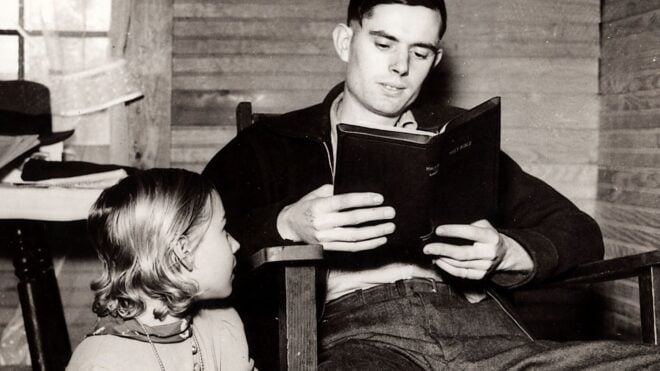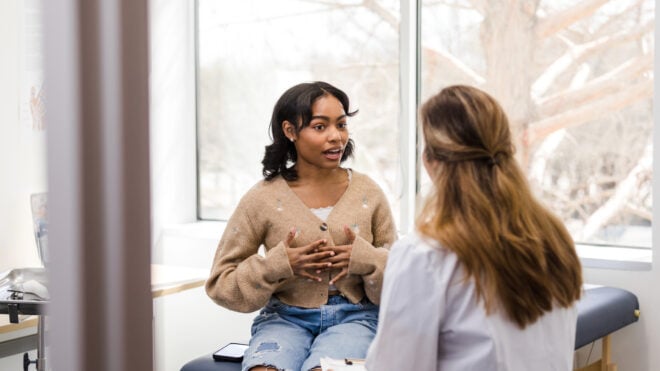
Some Americans know that President John F. Kennedy nearly died from scarlet fever as a child, but the full extent of his health battles and conditions as an adult has been described as "one of the best-kept secrets of recent U.S. history" by The Atlantic.
More from LittleThings: Woman Named Diana De Vegh Claims She Was JKF's Mistress When She Was Only 20 Years Old
The outlet also notes that it's not surprising details of JFK's health were not publicly revealed, as doing so could have all but completely dashed his hopes of being president in the first place.
In 1960, two aides for Lyndon B. Johnson — John Connally and India Edwards — told the media that JFK had been diagnosed with Addison’s disease. The condition "characterized by a deficiency of the hormones needed to regulate blood sugar, sodium and potassium, and the response to stress," and the aides stated that it could be life-threatening. This was denied by the Kennedy family, and Kennedy went on to secure the Democratic nomination over Johnson.
Later in the same year, Richard Nixon reportedly attempted to get access to Kennedy's medical files. One of Kennedy's doctors, Eugene J. Cohen, had his offices broken into and "ransacked," though ultimately the thieves were unable to find Kennedy's files.
In previous decades, experts have begun to piece together Kennedy's likely medical history. After combatting scarlet fever as a child, Kennedy spent his prep school and college years in and out of hospitals. At one point, doctors worried he had leukemia.
Kennedy suffered from ulcers and colitis, and he received injections of steroids from doctors. He also famously suffered from intense back pain and once claimed to have almost died following a surgery on his back in 1954.
In 2013, a team of Kennedy's friends agreed to allow The Atlantic to examine his papers from the years 1955 to 1963. The papers "add telling detail to a story of lifelong suffering, revealing that many of the various treatments doctors gave Kennedy, starting when he was a boy, did far more harm than good."
In fact, the steroid treatments alone might have made both his Addison's disease and his back pain immeasurably worse.
The outlet also noted that during high periods of stress, Kennedy was on a number of medications. These included "steroids for his Addison’s disease; painkillers for his back; anti-spasmodics for his colitis; antibiotics for urinary-tract infections; antihistamines for allergies; and, on at least one occasion, an anti-psychotic (though only for two days) for a severe mood change."
That the Kennedy family would keep details of his health conditions a secret is no surprise; the family made being the picture of perfect health part of Kennedy's campaign for the presidency. He himself was not held back by the conditions, considering none of them were life-threatening or even a barrier to being president of the United States.
As president, Kennedy was seeing "an allergist, an endocrinologist, a gastroenterologist, an orthopedist, and a urologist" and doctors Janet Travell, Admiral George Burkley, and Max Jacobson. During his first half-year in office, he "suffered stomach, colon, and prostate problems; high fevers; occasional dehydration; abscesses; sleeplessness; and high cholesterol."
His medications included "injected and ingested corticosteroids for his adrenal insufficiency; procaine shots and ultrasound treatments and hot packs for his back; Lomotil, Metamucil, paregoric, phenobarbital, testosterone, and trasentine to control his diarrhea, abdominal discomfort, and weight loss; penicillin and other antibiotics for his urinary-tract infections and an abscess; and Tuinal to help him sleep."
Ultimately, had he not died in November 1963, Kennedy would have continued to decline. As it is, the back brace he wore might have contributed to his early death. The Atlantic notes, "On November 22, 1963, Kennedy was, as always, wearing a corset-like back brace as he rode through Dallas. Oswald’s first bullet struck him in the back of the neck. Were it not for the back brace, which held him erect, the second, fatal shot to the head might not have found its mark."




